What is the difference between 'Kuroge Wagyu Sukinabe Zen', which uses Japanese black beef for the first time in the history of the Yoshinoya 121 years? I tried to compare it with a normal beef sukiyaki

From October 5, 2020 (Monday), the Yoshinoya beef bowl chain has been offering the ' Kuroge Wagyu Sukinabe Zen ', which is the first Japanese black beef to be used in its 121-year history. In addition, it is said that a ' beef pot family pack ' containing 3 to 4 servings of beef will be offered only for takeout, so try eating beef until you are full while comparing it with regular beef sukiyaki set. I did.
Yoshinoya's long-cherished wish 'Kuroge Wagyu' first appeared in history New product 'Kuroge Wagyu Sukinabe Zen' will be on sale nationwide from October 5th in limited quantities
(PDF file) https://www.yoshinoya.com/wp-content/uploads/2020/09/30202723/news20201004.pdf
I came to the Yoshinoya.
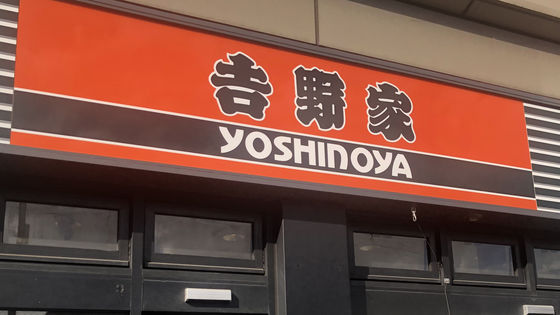
In front of the store, the appearance of the Japanese black beef sukiyaki set was appealing with a banner.
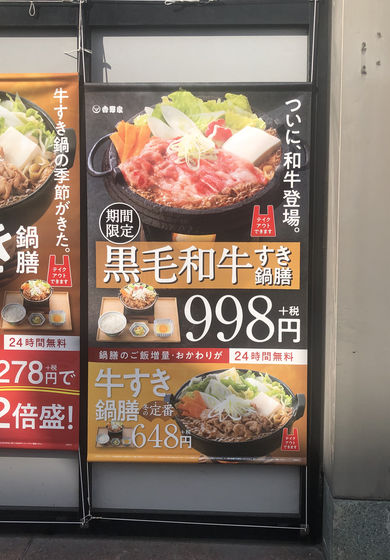
At takeout, I bought a Japanese black beef sukiyaki set (998 yen excluding tax). A set of Japanese black beef sukiyaki, raw eggs and rice.
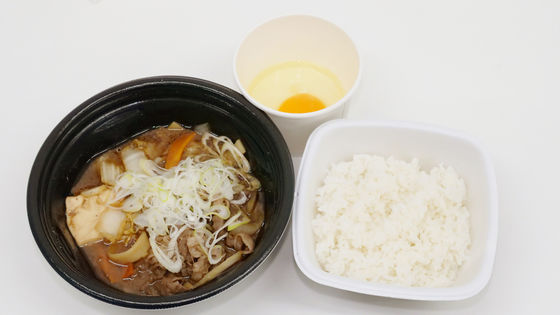
A comparison of the Japanese black beef sukiyaki (left) and the regular beef sukiyaki set (648 yen excluding tax, right) purchased for comparison. There is a difference in the amount of meat so that you can see it at a glance, and obviously the Japanese black beef sukiyaki set has less meat.
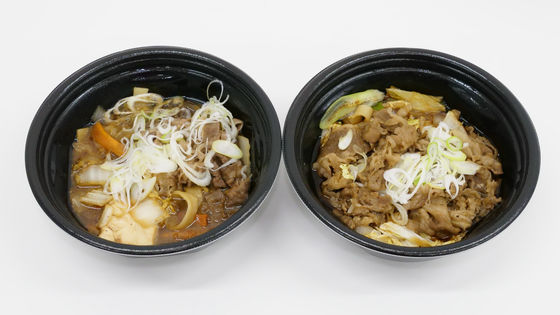
Looking at the dashi stock, the Japanese black beef sukiyaki has more fat, while the regular beef sukiyaki has less fat.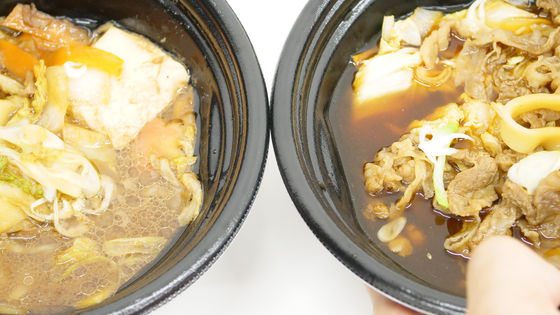
When I try to eat Japanese black beef sukiyaki, the beef is simmered under the sweet and spicy sukiyaki. Even so, I can feel the elasticity and texture, so I realized that I'm definitely eating meat now. Chinese cabbage, green onions, and carrots have a crispy texture. However, the taste of the meat itself seems to be hazy before the seasoning is quite strong.
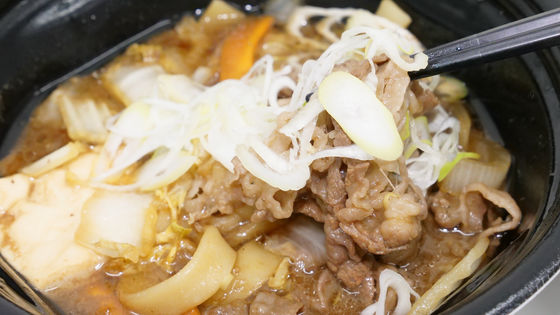
In addition, Japanese black beef sukiyaki also contains udon and tofu, so although the meat is small, the volume itself is quite large.
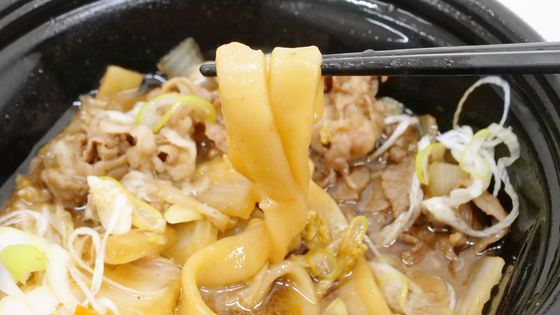
Melt the attached raw egg and entangle it in the meat to make the sweet and deeply seasoned meat mellow. It also goes great with white rice.
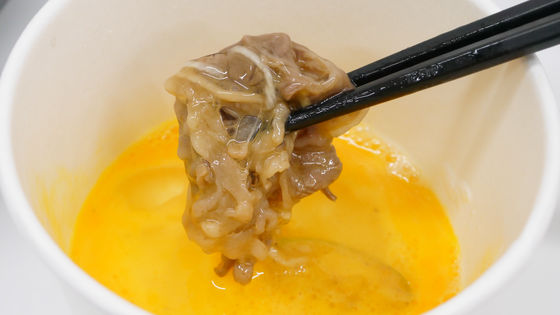
I wondered, 'Is there a difference in the taste of meat between Japanese black beef sukiyaki and regular beef sukiyaki?', So I divided them into small plates and compared them. If you compare them closely, it's a little hard to see in the image, but the Japanese black beef sukiyaki is a little darker and reddish. However, the seasoning is still quite strong, so there is almost no difference in taste even if you eat it. It seems that the meat of the Japanese black beef sukiyaki is a little refreshing, probably because the fat has melted in the dashi stock.
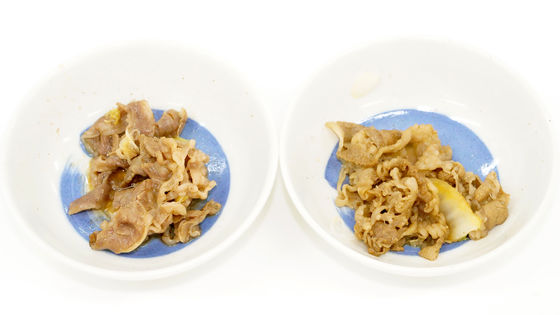
Next, I will try the beef pot family pack for 3 servings (748 yen excluding tax, left) and 4 servings (948 yen including tax, right). The following is a side-by-side comparison of each with a transportation IC card.
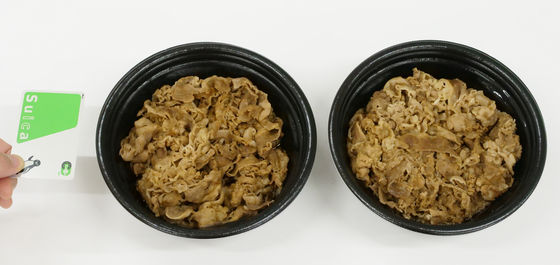
3 servings include a container and weighs 417 grams.
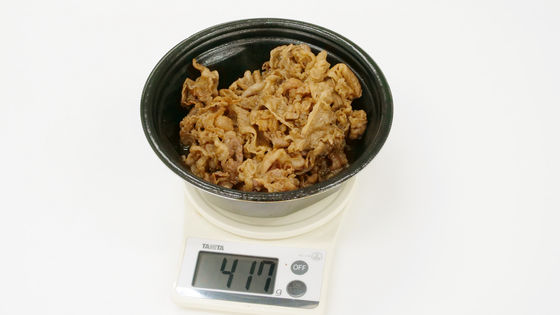
The actual measurement is 573 grams including the container for 4 servings. Both are beef only, do not contain onions or Chinese cabbage, and although they contain hot pot juice, they are overwhelmingly voluminous.
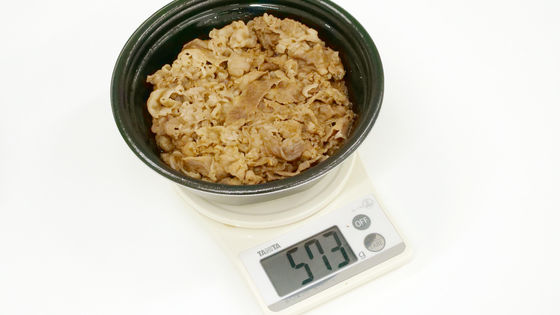
Although it is not Japanese black beef, the nice thing about the Beef Nabe Family Pack is that you can add 'additional meat' to the beef sukiyaki that you have eaten first. However, there is a considerable amount, so be careful not to overeat.
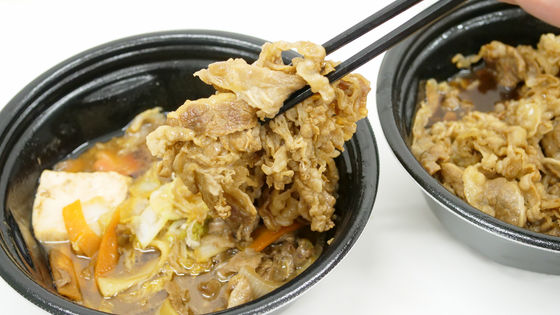
Related Posts:
in Tasting, Posted by log1i_yk







